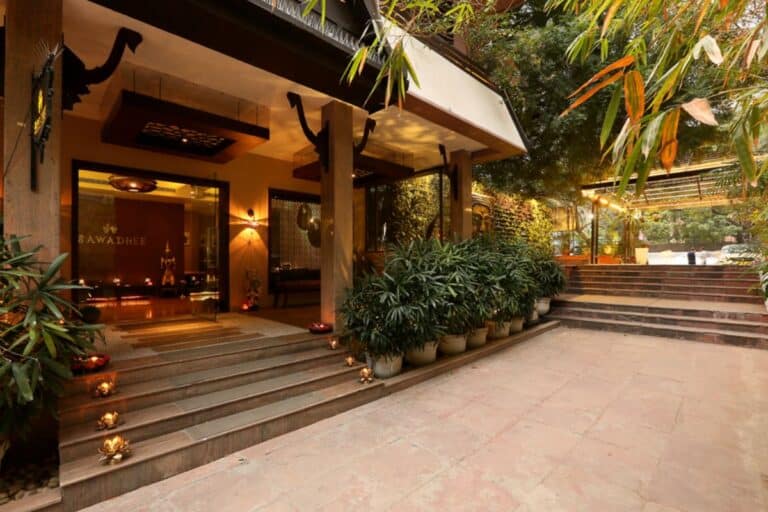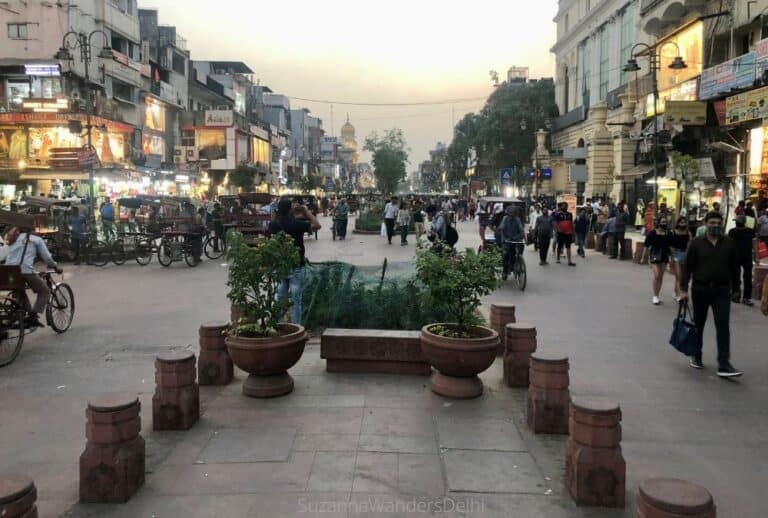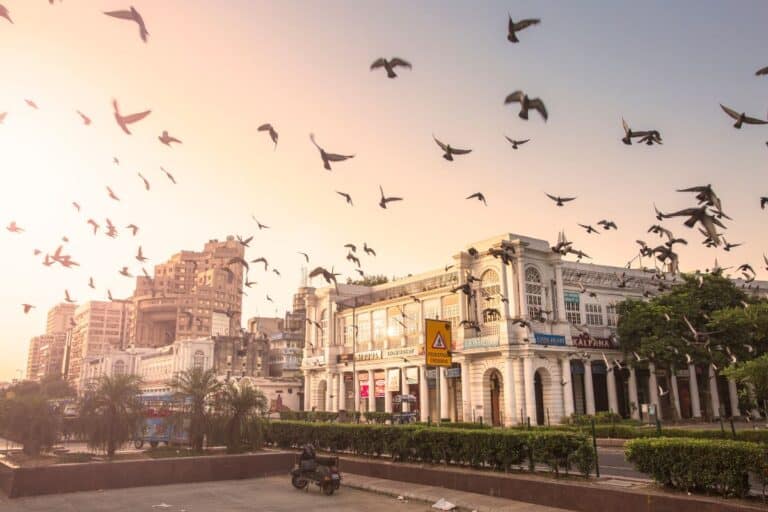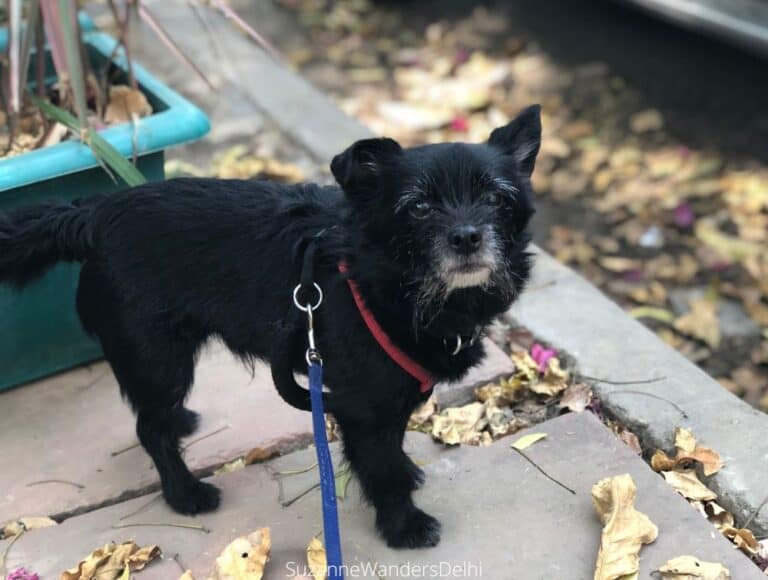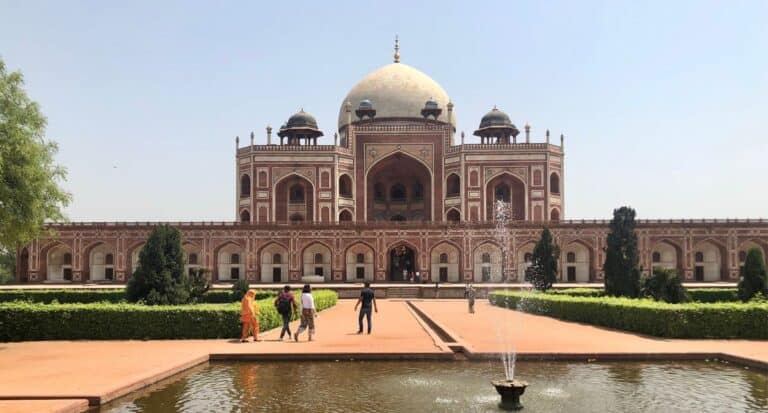Suzanne Wanders Delhi contains affiliate links. If you make a purchase using one of the links below, I may receive compensation at no extra cost to you. I only recommend products and services I use and trust. Read my disclaimer for more information.
A trip to Old Delhi is like walking through history. Although much more congested now, Old Delhi is still basically the same as it was in the 1650s when it was built. You can walk through the same markets, the same labyrinth of lanes, eat the same food and see much of the same beautiful Mughal architecture that existed hundreds of years ago. I live in Delhi and spend a lot of time in its historic centre. These are the top things to do and see to experience the charm of Old Delhi and glimpse its captivating past.
Top Things to Do and See in Old Delhi: Quick Guide
If you’re in a hurry, here’s a quick list of the very top things to do and see in Old Delhi:
- Red Fort (UNESCO) – Royal palace built in 1639
- Jama Masjid – largest mosque in Delhi, built in the 1650s
- Chandni Chowk – bustling centre of Old Delhi and the most famous street in the city
- Khari Baoli – famous spice market
- Paranthe Wali Gali – lane full of parantha shops (flat stuffed breads)
Top Things to Do and See in Old Delhi
1. Red Fort (UNESCO)
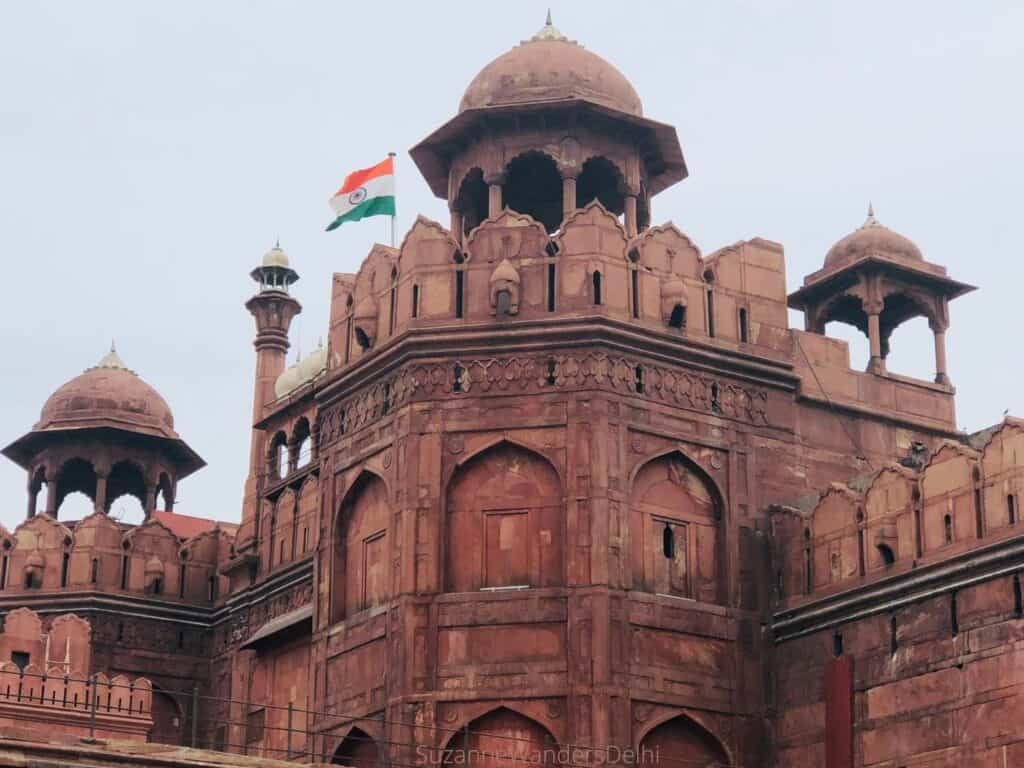
Standing guard over Old Delhi is one of India’s most treasured sites, the Red Fort. This UNESCO world heritage site was built in 1639 by the Indian emperor Shah Jahan, the same ruler who built the Taj Mahal.
The Red Fort was the main royal palace of all successive Indian rulers until 1857 when the British sent the last Mughal ruler into exile, and officially took over the rule of India.
Even though much of the palace grounds and buildings were destroyed by the British army, it is still a magnificent site with beautiful Mughal architecture and should be on your list of things to do in Old Delhi. It’s one of the top attractions for Indian and foreign tourists.
I recommend buying your tickets in advance on the Architectural Survey of India website to avoid the ticket counter. Tickets are also INR 50 less on the site.
Insider tip: See the sound and light show called Jai Hind based on the recent history of India. The one hour show takes place at 3 different spots in the Red Fort. The English show is at 8:30 pm, Tuesday to Friday. Tickets can be purchased at: https://in.bookmyshow.com.
- Hours & cost: 8:00 am – 9:00 pm, daily (closed Monday); INR 600 foreigners, children under 15 free.
- Nearest metro station: Lal Quila (Violet line), exit Gate 4
2. Chandni Chowk
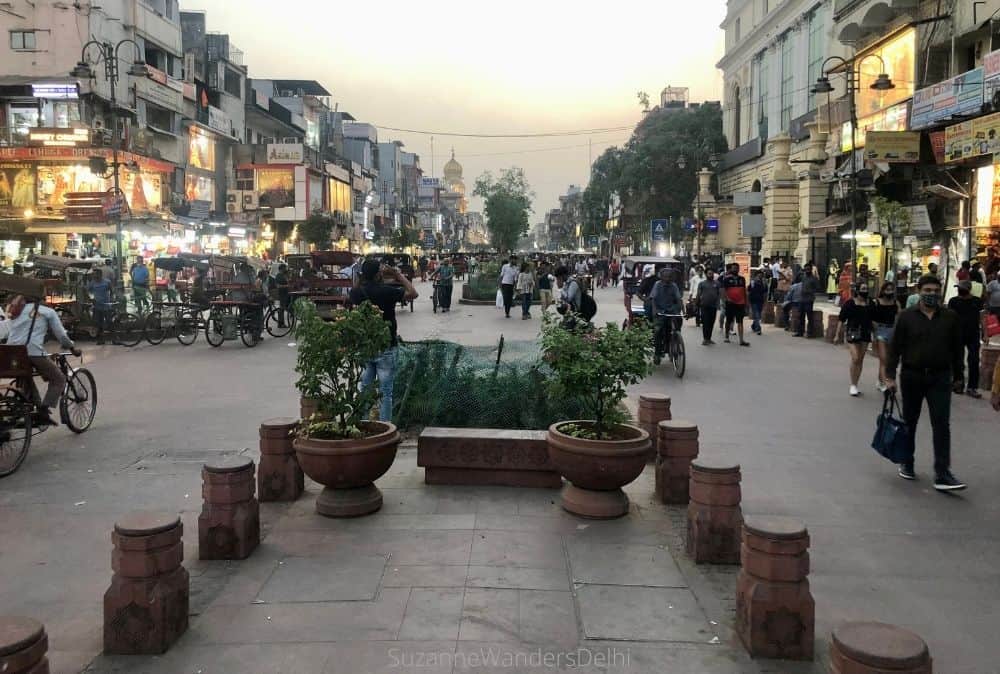
A walk across Chandni Chowk is literally a walk through hundreds of years of history. Delhi’s most famous street was built in the 1600s and many havelis (mansions), markets and temples from that era still line the street.
Now that motorized traffic is prohibited between 9:00 am to 9:00 pm, it’s easy to walk the 1.3 km from one end to the other. Along the way you will pass historic havelis (look up past street level to see them), Jain, Sikh and Hindu temples, busy street stands, and shops specializing in Indian wedding outfits. Many Delhi brides come to Chandni Chowk for their wedding shopping.
Chandni Chowk is the name of the street, but the whole Chandni Chowk area and market is often referred to as Chandni Chowk as well.
Insider tip: You can take a cycle rickshaw from one end at the Red Fort, to the other end at Fatehpuri Masjid and the spice market. Grab something sweet at Giani’s di Hatti, like the Indian dessert rabri faluda (sweet vermicelli noodles, layered with Indian custard and nuts). Giani’s is famous for it.
- Hours & cost: 24/7 but hours for shops and temples vary, (some shops close on Sunday); free.
- Nearest metro station: Chandni Chowk (Yellow line), exit Gate 1
3. Jama Masjid
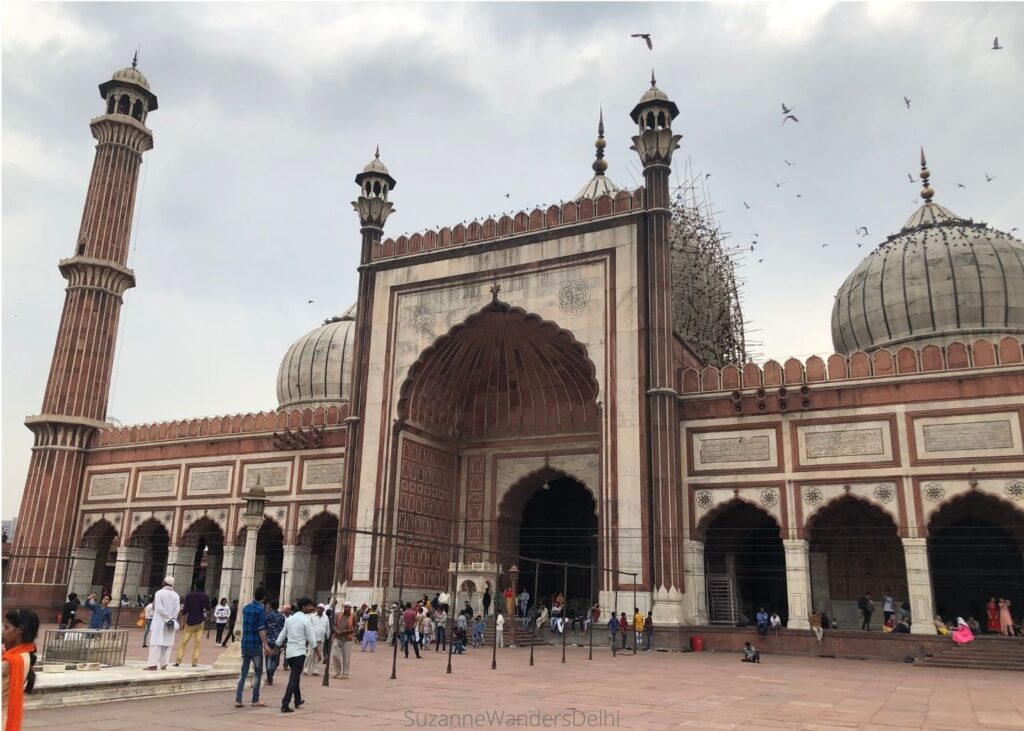
Jama Majid was the mosque of the royal Mughals. It was built by emperor Shah Jahan in the 1650s. Shah Jahan is the same emperor who built the Red Fort and the Taj Mahal.
Adorned with 3 large arched entrances, 3 marble domes, 4 towers and 2 minarets, it is one of the largest mosques in India. For a fee you can climb one of the towers and get some spectacular photos of Old Delhi. It’s something a little unique to to do and will give you a great perspective of Old Delhi.
This is an active mosque and there is a dress code. Everyone must remove shoes and dress conservatively (knees and shoulders covered – you can borrow a cover up if needed); women must cover their heads. Photos are allowed but there is a fee for taking in a camera.
Insider tip: Bazar Matia Mahal is directly across the road from Gate 1 of Jama Masjid. It is a haven of Mughal street food. Try places like Al Jawahar, Haji Nadeem Shahi Sheermal, Cool Point, Rehmatullah Hotel, Karim’s and Aslam Chicken.
- Hours & cost: 7:00 am – 12:00 pm & 1:30 pm – 6:30 pm, daily; free (INR 300 fee for bringing a camera)
- Nearest metro station: Jama Masjid (Violet line), exit Gate 2
4. Khari Baoli (Old Delhi Spice Market)
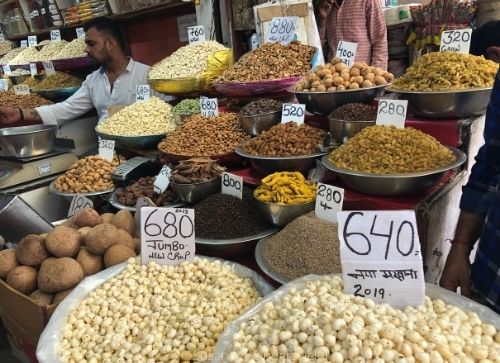
This vibrant and busy market has stood here for 400 years. It was established in the Mughal era and is still one of Asia’s largest whole sale spice markets. You’ll be mesmerized by the colours and smells as you walk through Khari Baoli.
This market is a paradise for home cooks and foodies. The variety of fresh spices, herbs, teas, dried fruits and nuts cannot be matched anywhere else in Delhi. Don’t buy at the first shop you see, get into the back alleys and further along the market. Khari Baoli is one of the most popular things to do in Old Delhi and gets a lot of tourists. Prices come down the deeper you get into the market.
- Hours & cost: 11:30 am – 6:00 pm, daily (closed Sunday); free
- Nearest metro station: Chandni Chowk (Yellow line), exit Gate 5
5. Gurudwara Sis Ganj Sahib
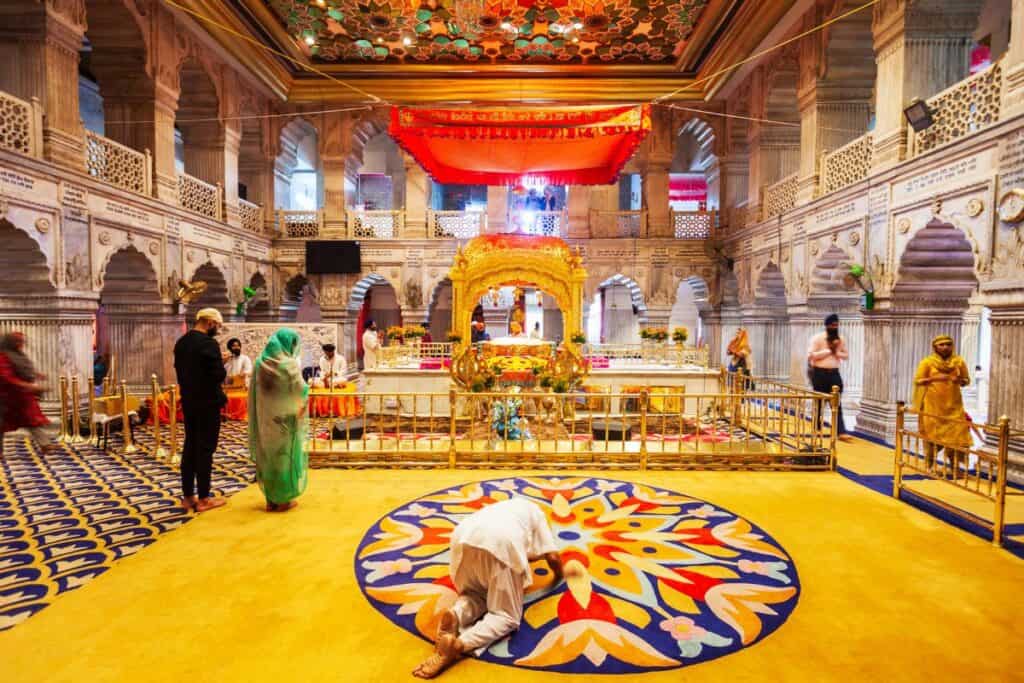
Gurudwara Sis Ganj Sahib is one of the most prominent and beautiful Sikh temples in India. Thousands of devotees visit every week. Not only is the temple an architectural marvel, it is here the ninth Sikh guru was martyred, making this temple one of the most important in the Sikh community.
Often referred to as the good Samaritans of the world, the Sikh community are selfless and welcoming. Everyone can visit the temple, regardless of religion or nationality. I regularly visit Sikh temples in Delhi and often have langar, the free community meal. After paying your respects in the prayer hall, be sure to visit the giant kitchens where volunteers prepare thousands of free meals daily.
Women and men must remove shoes and cover their heads before entering the temple. Bandanas are available to borrow if needed.
- Hours & cost: 24/7; free
- Nearest metro station: Chandni Chowk (Yellow line), exit Gate 1
6. Paranthe Wali Gali
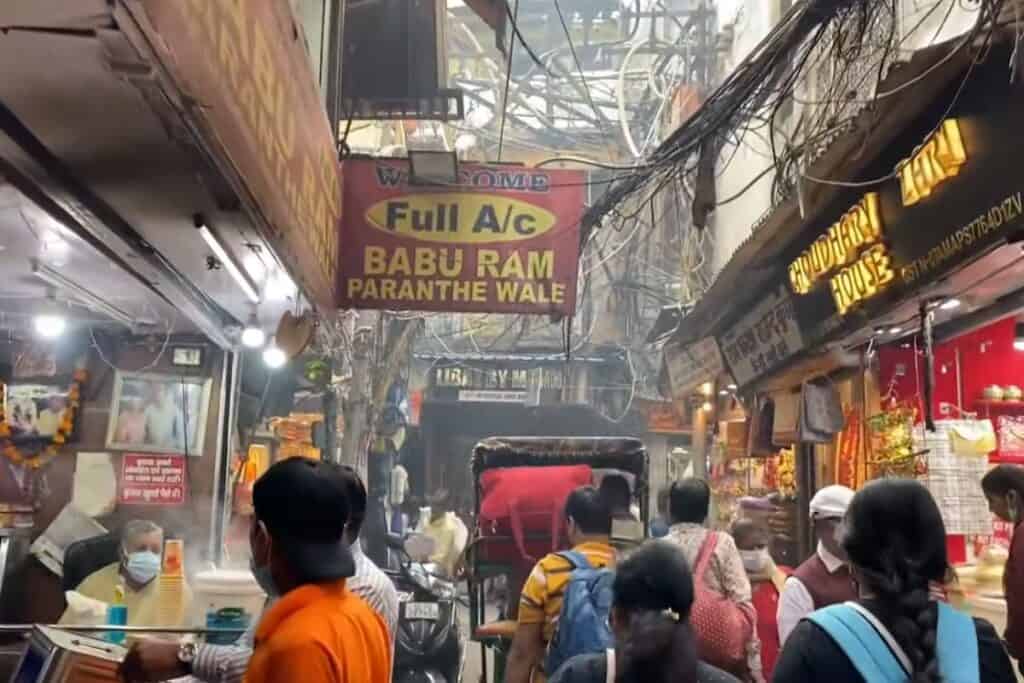
Paranthe Wali Gali is one of the most famous lanes in Delhi for street food. Paranthas are Indian flatbreads, often stuffed, which are a staple of the northern Indian diet. People have bought paranthas here since the 1870s.
You’ll see paranthas for sale all over Delhi, but not like here. Everything from the traditional such as aloo or gobi (potato or cauliflower) to the unusual like banana or pea is available. And unlike elsewhere in the city, these paranthas are served with pickle (chutney) and sabzi (vegetables). They are also fried in ghee, giving them a delicious, rich flavour.
I don’t think it matters which paranthe shop you eat at – they all claim to be the best and the original. Just look for one that seems busy. After your paranthas, explore Kinari Bazaar. The famous wedding market is one of the best things to do in Old Delhi and it’s located off the lanes of Paranthe Wali Gali.
- Hours & cost: 9:00 am – 11:00 pm, daily: price varies but generally INR 100-200
- Nearest metro station: Chandni Chowk (Yellow line), exit Gate 1
7. Specialty Markets of Chandni Chowk
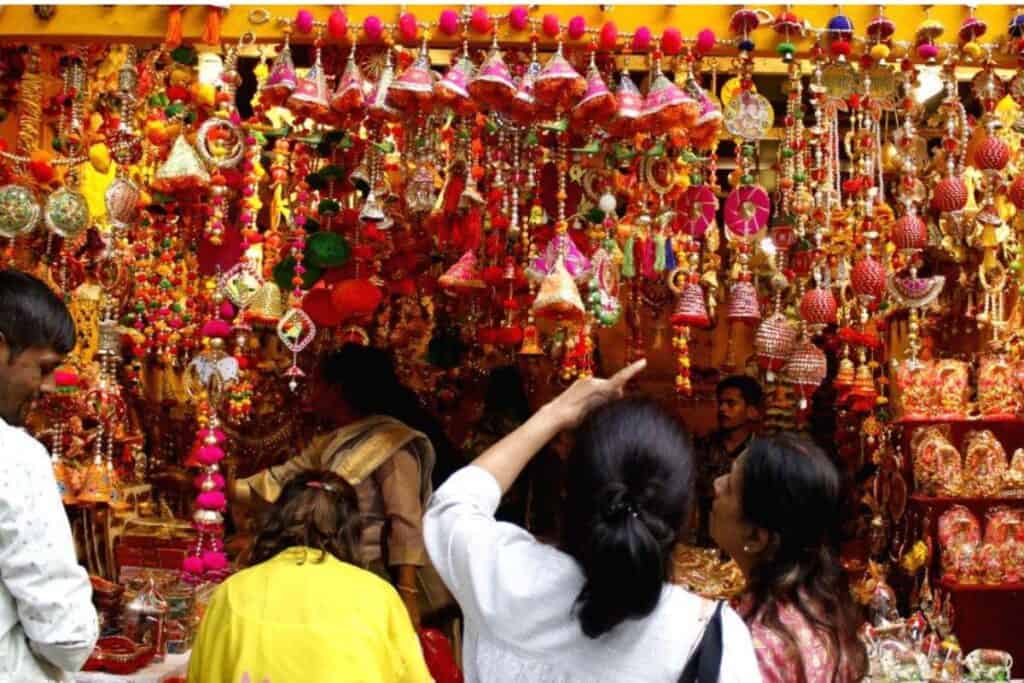
The lanes off Chandni Chowk are a treasure trove of historic markets, some dating back to the time of Shah Jahan in the 1600s.
You can find everything in Chandni Chowk if you know where to look! Spices and dried fruits in Khari Baoli, Indian wedding accessories and trim in Kinari Bazaar, silver and jewelry in Dariba Kalan, stationary and wedding invitations in Chawri Bazaar, electronic good and lights in Bhagirath Palace, books in Nai Sarak, and fabrics in Katra Neel.
If you can bargain you’ll get some terrific deals. But be prepared for crowds, and just a heads up that Indians do not queue.
- Hours & cost: 11:00 am – 7:00 pm (hours can vary depending on market), daily (closed Sunday); free
- Nearest metro station: Chandni Chowk (Yellow line), exit Gate 1
8. Shri Digambar Jain Lal Mandir & Bird Hospital
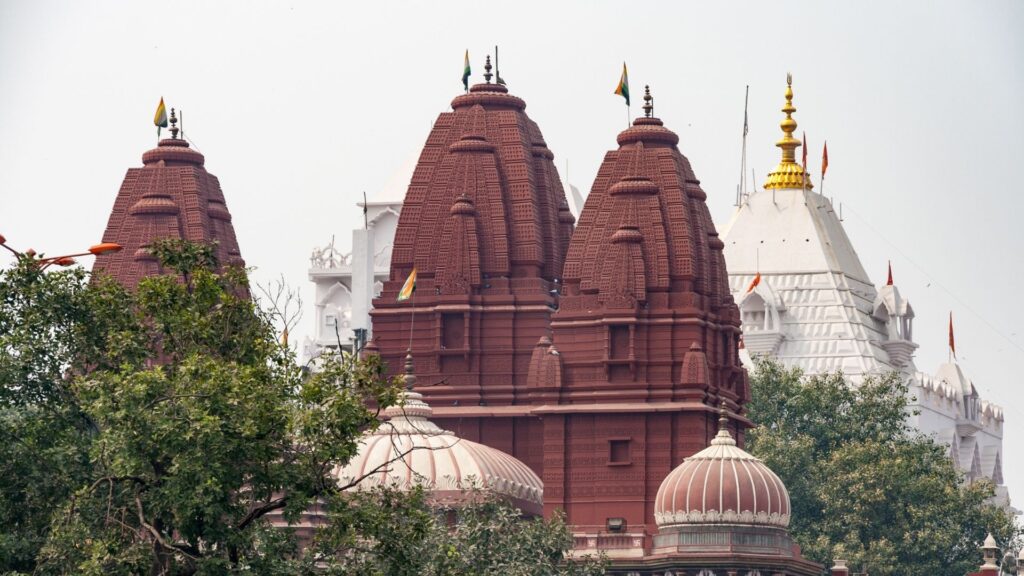
Shri Digambar Jain Lal Mandir is the oldest Jain temple in Delhi. Like much of the iconic architecture in the area, it was built in the 1650s. There was a large Jain community in the area at that time, and Shah Jahan gifted them this land so they could build a temple.
Jains believe the path to enlightenment comes through non-violence to all living things. They are strict vegetarians who do not even eat root vegetables, as removing the root kills the plant.
In keeping with Jain faith, there is a charity bird hospital directly behind the temple. Birds are treated free of charge and then released into the wild. It is possible to tour the bird hospital, but be aware that there are droppings on the floor (and you’ll be in your bare feet).
Shoes and all leather items must be removed before entering the temple grounds. Photography is not allowed inside.
- Hours & cost: 3:30 am -11:30 am & 6:00 pm – 9:30 pm daily (summer); 6:00 am – 12:00 pm & 5:30 pm – 9:00 pm daily (winter); free
- Nearest metro station: Lal Quila (Violet line), exit Gates 1 or 4
9. Kathika Cultural Centre
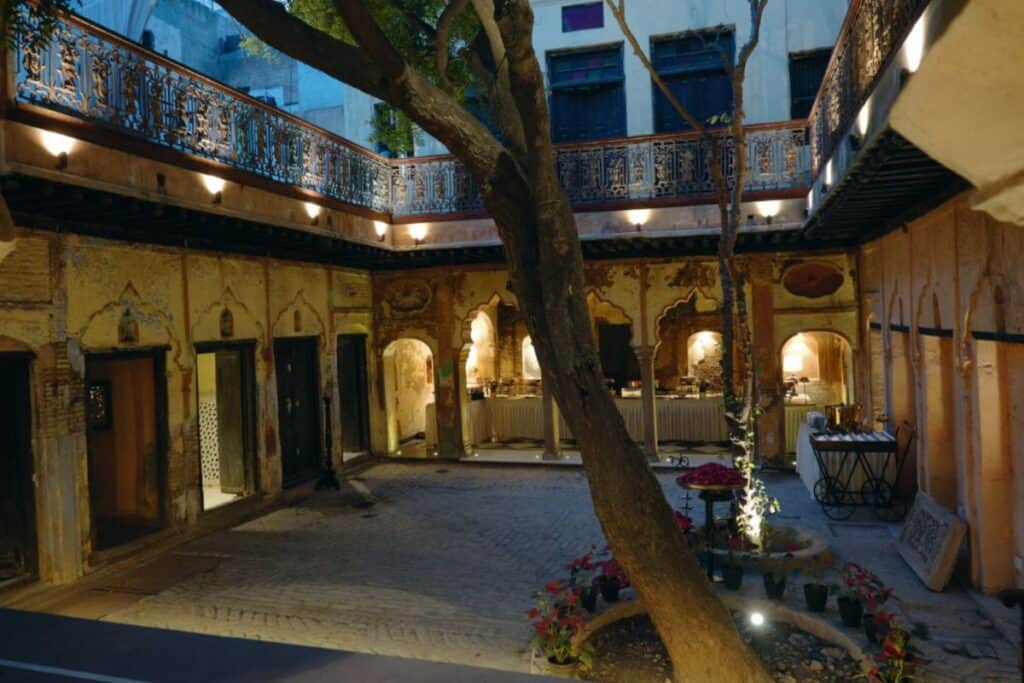
One of the gems of Old Delhi, Kathika Cultural Centre is part museum, part cultural centre. It’s located in a beautifully restored heritage haveli, which lets visitors immerse themselves in what life was like in Old Delhi during Mughal times.
The centre regularly hosts live performances, storytelling and film screenings on the culture and history of Shahjahanabad (Old Delhi’s historic name). Through exhibits featuring photographs, artefacts, jewelry and clothing and the haveli itself, you will learn what life in Shahjahanabad was like.
Being able to get inside and explore a historic haveli is a wonderful thing to be able to do in Old Delhi. Every day at 11:30 am there is a cultural activity, such as live music, dance or painting.
Insider tip: Check the Kathika Cultural Centre website for upcoming events. They offer some very unique performances and workshops.
- Hours & cost: 10:00 am – 6:00 pm, daily (closed Monday); free, but there is a fee for the cultural activities
- Nearest metro station: Chawri Bazar (Yellow line), exit Gate 3
10. Haveli Mirza Ghalib
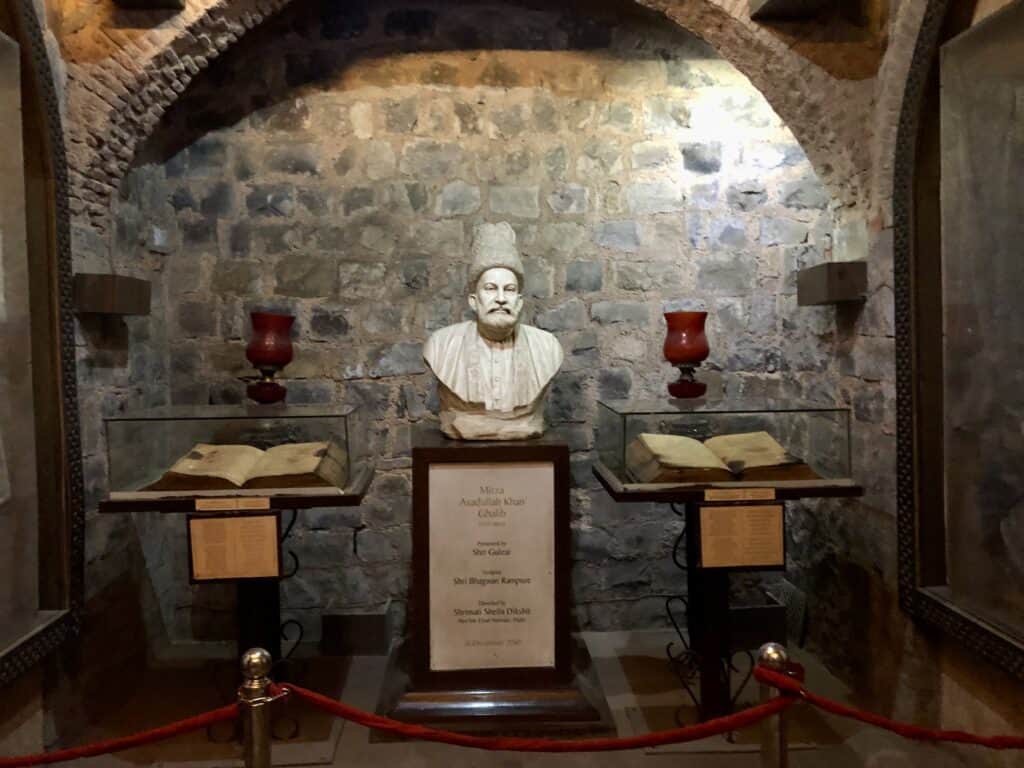
This is the historic home of who many consider the greatest Mughal poet, Mirza Asadullah Khan Ghalib. He loved Old Delhi and lived through the destruction of Shahjahanabad by the British in the 1850s. Of Delhi’s demise he mournfully wrote:
The eyes are not lifeless cracks in a wall but will shed tears at the panorama of death and at India’s desolation. The city of Delhi was emptied of its rulers and peopled instead with creatures of the Lord who acknowledged no lord—as if it were a garden without a gardener, and full of fruitless trees.
You can visit Ghalib’s grave in Chausath Khamba, a beautiful, off the beaten path treasure.
- Hours & cost: 10:00 am – 6:00 pm, daily (closed Monday); free
- Nearest metro station: Chandni Chowk (Yellow line), exit Gate 5
Insider tip: Old Delhi has several monikers. Its historic name is Shahjahanabad, in Hindi it is called Purani Dilli, and its pet name by locals is Delhi-6, a reference to the postal code.
11. Eat Street Food in Chawri Bazaar
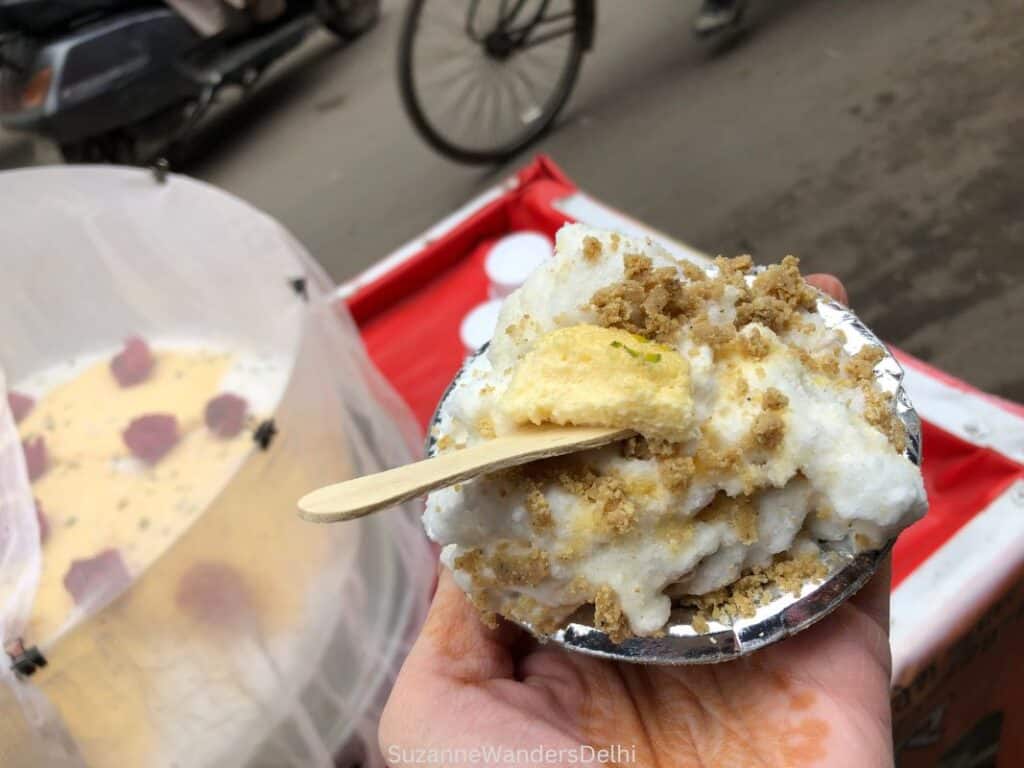
Exploring the thriving street food scene of Chawri Bazaar is one of the most fun and authentic things a visitor can do in Old Delhi. This bustling market, famous for selling paper products like wedding invitations and wall paper, is even more famous for the many chaat (snack) stands dotting its lanes.
First established in 1840, it is one of the oldest markets in Delhi. It’s a crazy tangle of windy lanes, overhead electric wires and throngs of people. But the food will be some of the best street food you eat anywhere in the world.
A few of my favourite places to eat in Chawri Bazaar are Hira Laal Chaat Corner, Shyam Sweets, and Ashok Chaat Corner. You can do a self-guided street food tour with this DIY Old Delhi street food walk. Don’t forget to drink street chai (spiced milk tea), it’s delicious and safe since it’s boiled vigorously.
You can eat street food safely, just look for stands that are busy with locals, only drink bottled water, avoid street meat, and don’t eat street food in summer or monsoon season. Read more about how to eat local and stay healthy here.
- Hours & cost: 10:00 am – 6:00 pm (hours may vary), daily (closed Monday); prices range but are generally INR 40-160
- Nearest metro station: Chawri Bazar (Yellow line), exit Gate 2
12. Fatehpuri Masjid
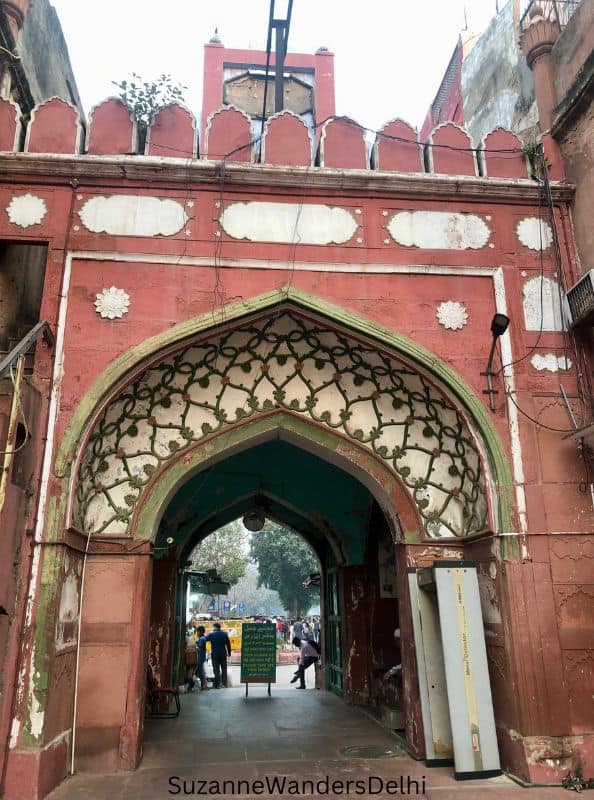
The famous street of Chandni Chowk starts at the Red Fort and end here, at Fatehpuri Masjid. This was a royal mosque, built in 1650 for Fatehpuri Begum, one of Emperor Shah Jahan’s wives. You have probably heard of another of Shah Jahan wives, the legendary Mumtaz Mahal whom he built the Taj Mahal for.
The mosque has a colourful history. It was severely looted and damaged by British soldiers in 1857, sold to a prominent Hindu merchant, sold back to the British and finally returned to the Muslim community 20 years later. It’s a very large mosque with a massive courtyard and several graves belonging to past Imams and Islamic scholars.
Fatehpuri Masjid is right next to Khari Baoli, the Old Delhi spice market.
This is an active mosque, shoes must be removed and women must cover their heads. Conservative dress is required.
- Hours & cost: 6:00 am – 8:00 pm, daily; free
- Nearest metro station: Chandni Chowk (Yellow line), exit Gate 5
13. Naughara Gali
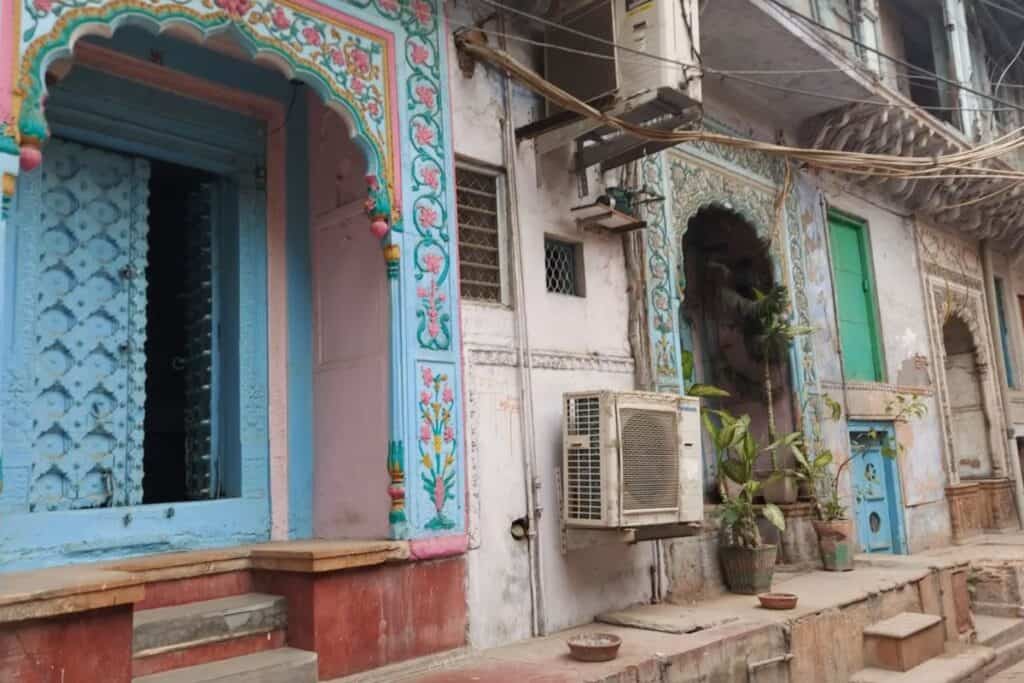
Near Kinari Bazaar is a group of 9 historic havelis from the 1700s on a lane called Naughara, which means 9 houses in Hindi. The lane is a fascinating glimpse into the history and architecture of Old Delhi, one of the more unique things you can do and see here.
These homes belonged to wealthy Jain families and were designed with Mughal and Rajasthani details. Ornate balconies, overhanging windows, intricately carved doors and frescoes adorn the facades of these Old Delhi mansions. The exteriors are subject to heritage restrictions, but I have been told the interiors are completely updated.
There’s a lovely Jain temple at the end of the lane. Feel free to take a look but remove shoes and any leather items before entering.
- Hours & cost: 24/7; free
- Nearest metro station: Chandni Chowk (Yellow line), exit Gate 1
14. Take a Cycle Rickshaw Ride
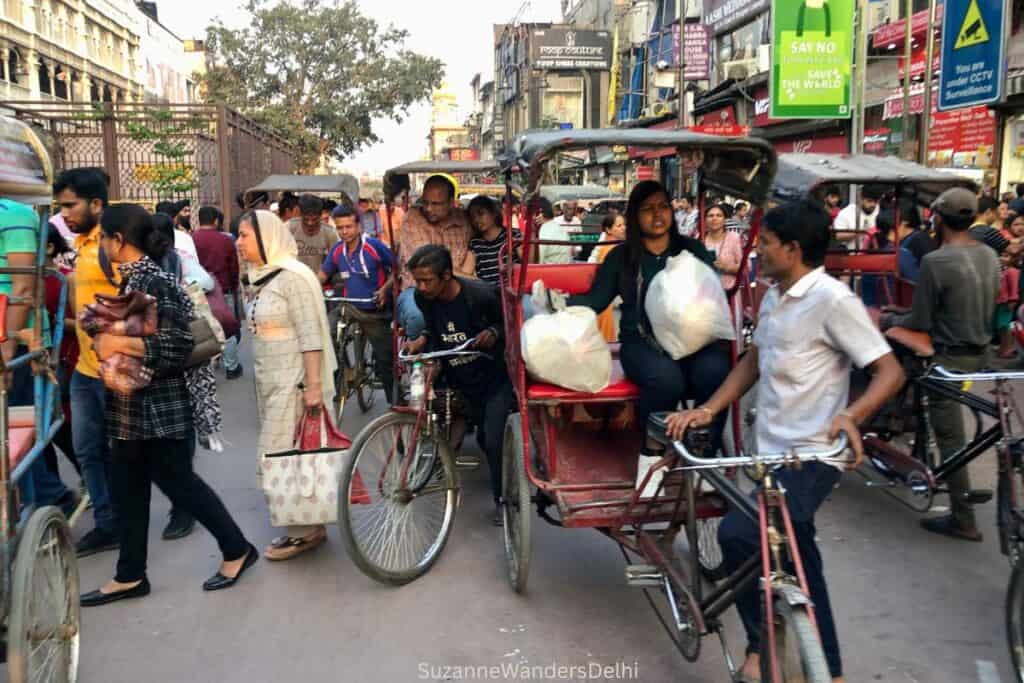
Explore the lanes and alleys of Old Delhi from a cycle rickshaw! This is a unique and immersive way to dive into the lanes and bazaars that make up the most historic part of Delhi.
The tight and often confusing labyrinth of alleyways are perfect for a cycle rickshaw, and these drivers are expert at navigating them. Most drivers do not speak English, but they should be able to point out the different markets and points of interest.
Cycle rickshaws comfortably fit two people up front, and two more can sit in the back rear facing seat. The back seat is not as comfortable (and awkward to get in and out of), but it’s a lot of fun. Make sure to agree on a price before you get in the rickshaw.
- Hours & cost: 24/7 but markets are closed Sundays; approx. INR 150-200 for 30 minutes
- Nearest metro station: Chandni Chowk (Yellow line), exit Gate 1
15. Chor Bazaar
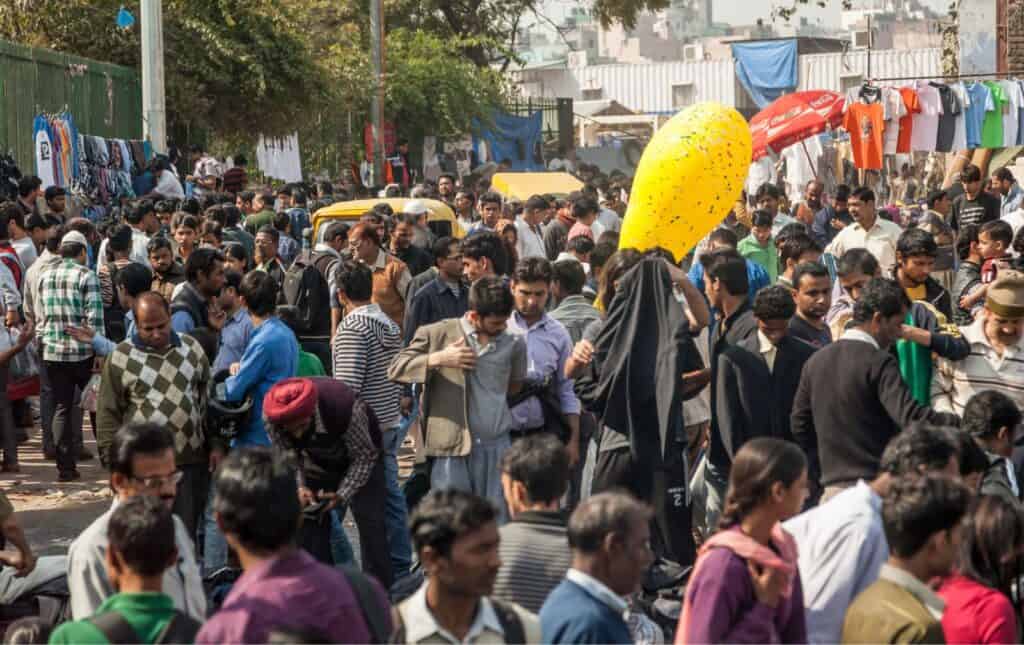
Chor Bazaar is one of Delhi’s biggest and cheapest flea markets. It’s only open Sundays, when the rest of the Old Delhi markets are closed, so it’s the perfect thing to do if you are here on this day.
The market has been here since Mughal times and was originally a place for buying and selling stolen goods (‘chor’ is Hindi for thief). It still has a reputation for dealing in stolen goods, especially electronics, so be cautious with your purchases. Despite its reputation, you can get some fantastic deals if you bargain and go early in the morning before the best items are gone.
The market is also infamous for pick pockets. Keep personal belongings close.
- Hours & cost: 5:00 am – 5:00 pm, Sunday only; free
- Nearest metro station: Jama Masjid (Violet line), exit Gate 2
16. Eat in a Local Dhaba
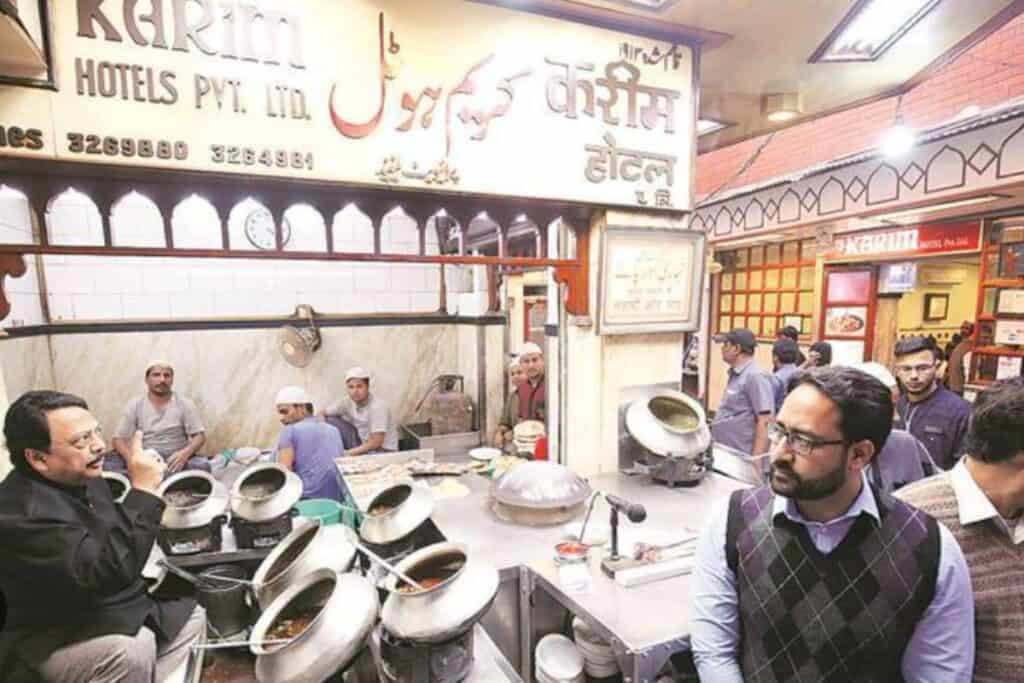
Old Delhi is not just famous for street food, it has some famous dhabas too. Traditionally a dhaba is a roadside eatery, one you would see when traveling on a main road, but these casual eateries have made their way into neighbourhoods also.
Don’t be fooled by the appearance of these restaurants. Although very humble, the food is delicious. Many dhabas have open kitchens and serve delicious dals, biryanis and curries from giant vats in the front. You’ll be able to get fresh naans, rotis and paranthas, usually baked in an onsite tandoor oven.
My favourite Old Delhi dhabas are Karim’s, Kake di Hatti and Manzoor Hotel, and eating in one of these is a very Delhi thing to to!
- Hours & cost: 10:00 am – 1:00 am (hours vary depending on restaurant); budget friendly
- Nearest metro station: Karim’s is near Jama Masjid (Violet line), exit Gate 2; Kake di Hatti and Manzoor Hotel are closer to Chandni Chowk (Yellow line), exit Gate 5
17. Partition Museum
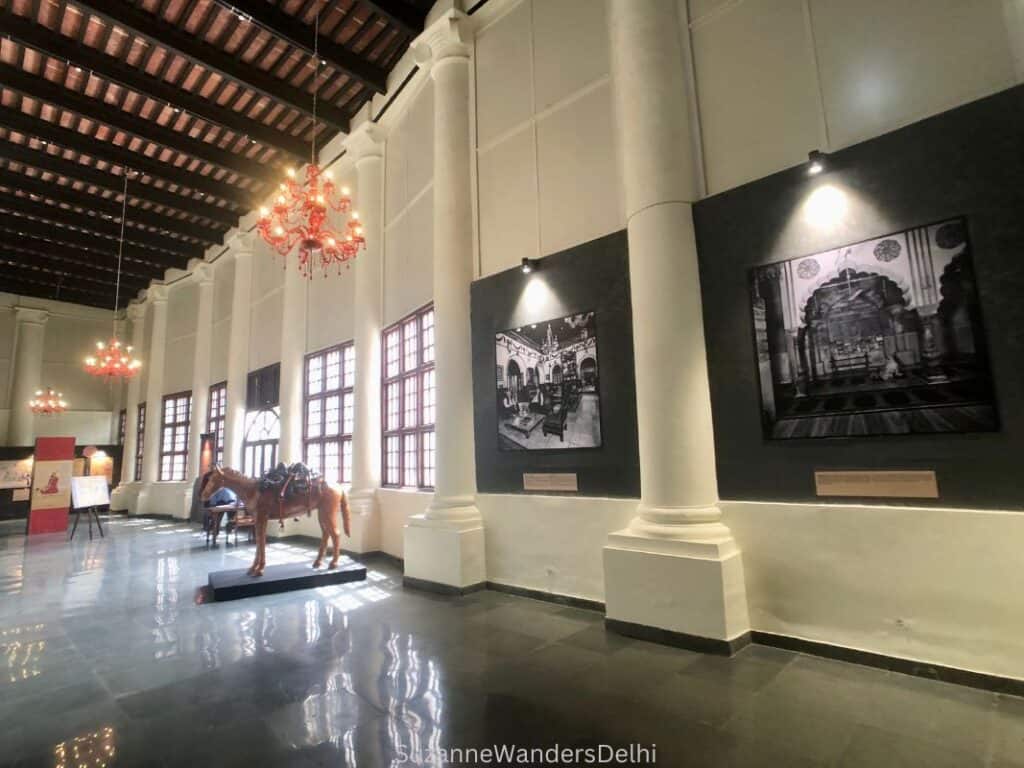
This very informative and moving museum is dedicated to remembering and educating the public about the most catastrophic event in recent Indian history, Partition. It is located outside of the area around Chandni Chowk and Chawri Bazaar, but still officially in Old Delhi.
Partition occurred on August 14, 1947. India was split into two dominions, Pakistan and India. On August 15, 1947 Indian gained independence from Britain. The new borders were drawn up in a great rush by a man who had never even set foot in India previously. The result was one of the largest and violent exchanges of population in history.
For anyone wishing to understand India and its people, the museum is an absolute must. Tickets are issued by an online token system on the Partition Museum’s website: www.partitionmuseum.org.
- Hours & cost: 10:00 am – 5:00 pm, daily (closed Monday); free
- Nearest metro station: Kashmere Gate (Violet line), exit Gate 7
18. Daryaganj Sunday Book Market
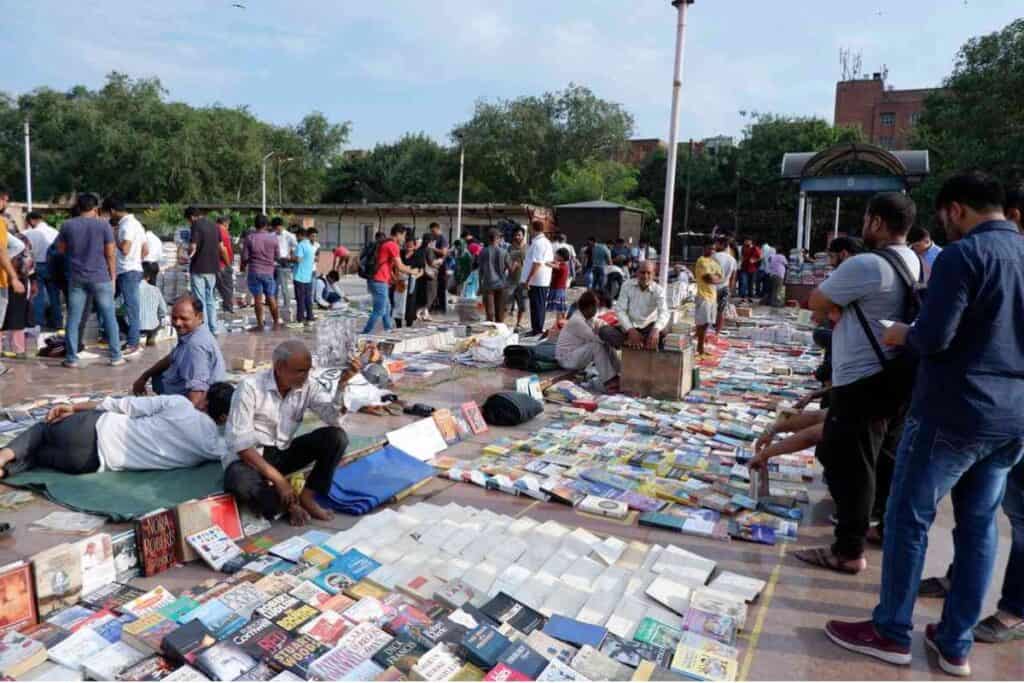
If you are a book lover, you will appreciate Delhi’s most famous book market. Thousands of books are laid out, all for remarkable prices. If there is no ‘fixed price’ sign, you are expected to bargain. Some books are even sold by the kilo!
Make sure you bring your own bag, not all vendors have them. This market is open on Sundays only.
Chor Bazaar is another market only open on Sunday, and it’s not far from the book market. Make a day of it by visiting both markets, Jama Masjid and one of the dhabas or street food stands in Bazar Matia Mahal for lunch, like Karim’s, Al Jawahar or Rehmatullah Hotel.
- Hours & cost: 9:30 am – 9:00 pm (summer) & 10:30 am – 5:00 pm (winter), Sunday only; free
- Nearest metro station: Delhi Gate (Violet line), exit Gate 2
19. Take a Walking Tour of Old Delhi
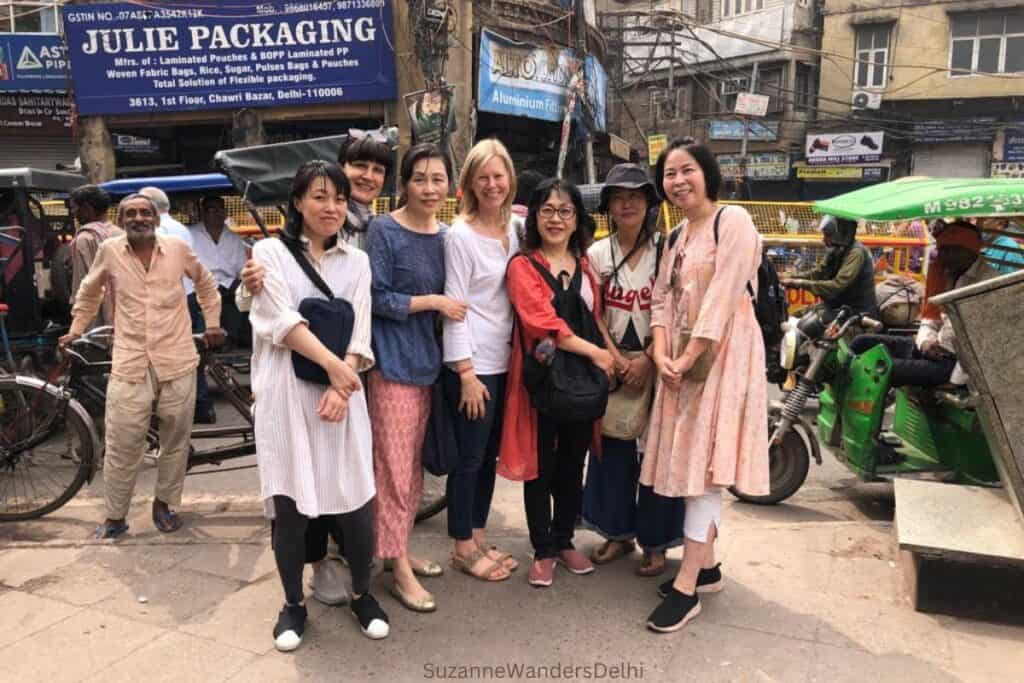
Taking a walking tour is one of the best ways to see and enjoy Old Delhi, and one of the most popular things to do here. A local guide can regale you with tales about the old city, take you to the must see sites and hopefully some off the usual tourist trail gems.
Old Delhi is the perfect place to take a heritage walk, a food tour, or tour of the specialty markets. While I do highly recommend taking a guided tour, you can also do your own street food tour, or DIY heritage walk.
How to Get to the Things to Do and See in Old Delhi
There are several options to get into Old Delhi, but the best way is by metro. Traffic is very congested in this part of Delhi and there isn’t much parking. Motorized vehicles are forbidden on Chandni Chowk between 9:00 am and 9:00 pm daily, so even if you do come by car, you can only get so far.
Old Delhi is well serviced by the metro. Surprisingly, the Delhi metro is one of the best systems in the world, it is seriously impressive. It’s easy to use, cheap, clean and safe. You can read my guide on how to use the Delhi metro, but it’s not crucial. The Delhi metro is user friendly and straight-forward.
Uber and Ola are also good options to get to Old Delhi, but like I mentioned, once you get there you will have to walk – the alleys are too narrow for cars. These are the two most popular app based ride share systems in Delhi. They’re both inexpensive.
Depending on the time of year, you can take an auto rickshaw. I generally avoid taking them into Old Delhi because auto rickshaws are open, and you’re exposed to the noisy traffic and pollution. But they’re easy to take in Delhi, cheap and widely used.
Where to Stay in Old Delhi so You’re Close to All the Things to Do
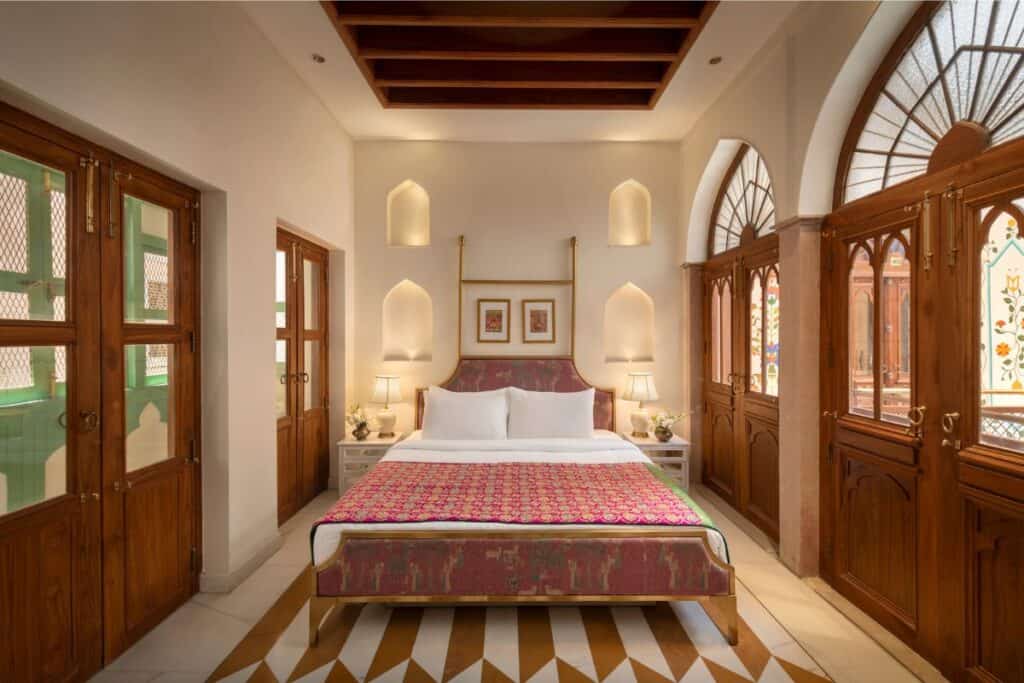
While this part of Delhi does not have a lot of reputable hotels, there are two exceptional boutique hotels, Haveli Dharampura and its sister property, Golden Haveli. You can completely immerse yourself in the history of Old Delhi in these luxuriously restored, traditional havelis. In fact they are so lovely, they’re honeymoon worthy.
Check rates and availability at Haveli Dharampura and Golden Haveli
Old Delhi is close to Paharganj, which is known as the backpacker area, and full of cheap accommodation. I don’t recommend staying in Paharganj because it’s not the safest or best part of town, but if you are determined to stay there, I recommend this hotel which is close to the New Delhi Railway Station:
Check rates and availability at Bloomrooms@New Delhi Railway Station
FAQ About Things to Do and See in Old Delhi
Chandni Chowk is the most famous street in Old Delhi. It is 1.3 km long, and runs through the centre of Old Delhi, from the Red Fort to Fatehpuri Masjid.
Old Delhi is the historic area of Delhi, built between 1639 and 1648 by Mughal emperor Shah Jahan. At the time it was called Shahjahanabad. New Delhi the capital of India. It is a different part of Delhi, built by the British in the 1920s and 1930s.
The most popular foods in Old Delhi are vegetarian chaats (savoury snacks) from street stands such as pani puri and aloo tiki, and Mughal influenced dishes, like kababs and mutton nihari.
Old Delhi comprises the areas of Chandni Chowk, Kashmere Gate, Daryaganj, Jogiwara and Sita Ram Bazaar.
The Wrap-up on Exploring the Charms of Old Delhi: 19 Top Things to Do and See
Around every corner of Old Delhi there is a story to tell… While it may feel a little overwhelming at times, it is a unique part of Delhi that will transport you back in time. There are so many things to do and see in Old Delhi, take your time and explore this historic part of India’s capital. It will be an unforgettable part of your Indian adventure!
Looking for more? You might also like…
- 29 Amazing Things to do in Delhi
- Heritage Walk of Old Delhi: An Insider’s DIY Tour
- 26 Places for the Best Food in Old Delhi
Don’t forget travel insurance! It’s always a good idea to carry travel insurance just in case something goes wrong. I really like and use SafetyWing


